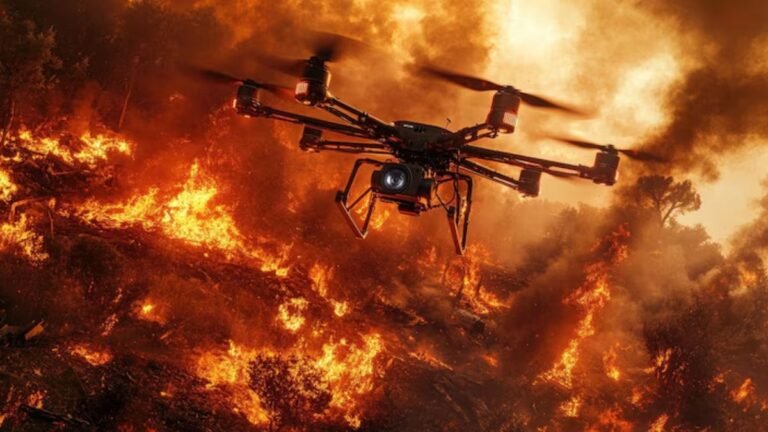When Israeli drones pierced through Iranian airspace in a high-stakes operation earlier this year, they triggered a wave of alarms in Tehran. But what followed wasn’t just destruction. It was an unexpected gift for Iran’s military engineers: dozens of downed, damaged, or abandoned Israeli drones—now being reverse-engineered in secret Iranian labs.
What Exactly Did Israel Leave Behind?
According to a report by Israeli newspaper Yedioth Ahronoth, sources within Israel’s defense ministry confirmed that several hundred million dollars’ worth of drones were lost during the operation. Many of these were Hermes-type surveillance drones, alongside small, explosive-laden FPV (First Person View) quadcopters—lightweight UAVs used for both reconnaissance and kamikaze-style attacks.
These drones, meant to disrupt and destroy, are now serving a very different purpose: education.
Tehran’s Technicians Get to Work
In various facilities under the control of Iran’s Islamic Revolutionary Guard Corps (IRGC), engineers have begun the painstaking process of reverse-engineering the captured Israeli technology. Reverse engineering involves breaking down an advanced device to its smallest parts—hardware, firmware, sensors, engines, communication chips, and onboard navigation systems—and figuring out exactly how it works.
An Iranian defense expert, speaking anonymously to The National, put it this way: “Every drone is a textbook. Every wire tells a story. If we can decode their thinking, we can build something even better.”

Not Iran’s First Rodeo
Iran has done this before—and successfully. In 2011, the country stunned the world by capturing a U.S. RQ-170 Sentinel stealth drone. Iranian scientists spent years decoding its stealth design and electronic systems. By 2014, Iran revealed the Shahed‑171 Simorgh—its own version of the captured American drone, now seen in military drills and allegedly exported to proxies.
This capability gives Iran a unique advantage in asymmetric warfare. Even without access to Western components, Tehran has built a surprisingly advanced drone industry by repurposing whatever it captures or copies.
What Makes These Israeli Drones So Valuable?
According to Economic Times, The drones in question are not just for eyes in the sky—they’re flying computers. The Hermes drones can fly long distances, relay real-time video, and carry sensors capable of electronic warfare and target acquisition. The FPV drones, though small, are fast, agile, and deadly. They are used in urban combat and can sneak past defenses with low radar signatures.
For Iran, replicating these features would be a game-changer. “These machines offer stealth, speed, and smart guidance. If we can mimic even half of it, our battlefield advantage doubles,” a former IRGC officer told Haaretz.
New Drones, New Dangers
Iran’s Shahed-series drones have already been seen in conflict zones—from Yemen to Ukraine. Now, with access to Israeli drone models, Iranian engineers are working on fusing new stealth materials, lightweight airframes, and advanced navigation to build better versions—potentially stealthier, cheaper, and deadlier.
Some defense analysts warn that Iran’s new models could bypass Israeli air defenses like Iron Dome or David’s Sling by using wood-metal hybrid frames and flying at low altitudes. “Even basic radar evasion technology in the wrong hands can neutralize multi-billion-dollar defense systems,” warned a recent analysis by the Atlantic Council.
A Growing Export Threat
If Iran succeeds in reverse-engineering these drones, it could soon flood the market with advanced UAVs, selling them to Hezbollah, the Houthis in Yemen, or even further afield. Tehran has previously armed Russia with its Shahed-136 suicide drones, which have wreaked havoc in Ukraine.
This isn’t just about domestic defense anymore—it’s an economic and geopolitical weapon. A low-cost, high-impact drone fleet would give Iran the ability to influence conflicts far beyond its borders.
Israel’s Quiet Mistake Could Echo for Years
Israel’s lightning strike in Iran might have succeeded tactically, but the fallout could be strategic. By unintentionally gifting Iran a treasure trove of UAV hardware and tech, it may have enabled Tehran’s drone program to leap ahead—faster than it otherwise could have through conventional R&D or black-market procurement.
As defense analysts put it, this is the kind of error that unfolds slowly—across months or years—when copied technology shows up on unexpected battlefields.
Read More: Why Are Pakistan’s Army Officers Visiting Sensitive Bases in Bangladesh?
Watch India Pakistan Breaking News on The Ink Post. Get Latest Updates, Latest News on Movies, Breaking News On India, World, Explainers.
Follow us on Facebook and Instagram and LinkedIn and Twitter to Stay updated!


